Quantum Break is "the culmination of 21 years of work"
Xbox One’s oldest exclusive emerges as a brave, potentially brilliant experience.
"This is the ultimate Remedy game... the culmination of 21 years of work." - Thomas Puha, Remedy Entertainment.
Quantum Break, the time-bending (former) Xbox exclusive, has worn a few different faces since its reveal in 2012, back when the Xbox One was a mystical glint in our beady eyes. Successive trailers were oblique and insubstantial, and the next-gen found its feet. Things changed.
There was one constant over those 4+ years of development though, that of Sam Lake: Remedy's handsome creative director; pulp fiction connoisseur; Max Payne look-alike. Immaculately coiffured and sounding humble, he explains that he and Remedy simply couldn’t afford to rush a project this ambitious. His face screamed relief. From what we've played and watched at a recent in-depth hands-on event, he might even get to stay that way.
We played the game’s first act and a half (approx. 3 hours) but it was the ‘Episode’ in between that wowed. Quantum Break has done the unthinkable and integrated broadcast-quality live-action (affected by player choice) into the flow of the game. It seems strange to be so enthused about non-playable sections of a much-anticipated AAA title, but this really is the apex of a long running obsession with TV tropes for Remedy. Sure, Halo had Forward Unto Dawn and Defiance ran a game and TV show in parallel, but the bar, ladies and gentlemen, has been raised.
Rest assured Jonny Rushkill, the Episodes are skippable. If you’re not hellbent on making Sam Lake cry though, you’ll find that discoveries and actions in-game add new scenes and details to the Episodes. The biggest impacts are signposted in the ‘Junctions’ that precede them; quick playable segments that switch control over to antagonist Paul Serene, performed menacingly by Aiden Gillen (aka Littlefinger). It’s the usual moral binary choice on offer but slipping into the boots of the Big Bad is a great twist. Also, Serene can ‘preview’ the future, ensuring that, heaven-forbid, there aren’t any unintentional implications.
In fact, as Lake is keen to stress, “if the game is about the heroes, the Episodes are about the villains.” Seeing the employees of Monarch, Gillen’s tech corporation, exchange banter over lunch, play their small parts in putting bigger forces into motion and generally not being comically evil is a genius-tier move. “It was a huge investment, and a massive headache,” Thomas Puha, producer and head of media at Remedy recounts. “But Microsoft were like ‘if you want to go crazy, got for it.’”
If Alan Wake was Remedy’s spin on the supernatural horror, and Max Payne was their hard-boiled noir, Quantum Break is their sci-fi techno-thriller. “In the early days we spent a week with a Finnish physics professor” Puha explains. “A lot of it went over our heads but it’s important to us to base as much as possible in real world science. If it could happen, this is kind of how you’d imagine it would.” Taking time (not just travel) as a subject, and a set of powers, was never going to be straight-forward but it’s clear from the opening hour that Remedy has not only done its research, but skillfully woven it into a compelling personal story too. Think Looper and Primer more than Back To The Future.
"A cinematic romp underpinned by hugely impressive tech, great performances, and a dark sense of humour."
The all-important story centres on Jack Joyce, performed nicely by Shawn Ashmore of Iceman fame, and his predictably accidental exposure to a fracture in time that, luckily, imbues him with a number of super-powers. Apart from the time sense (basically the ‘glowing outline vision that so plagues every AAA game of the last few years) these powers fit nicely into the fiction - Jack is able to near freeze a small area in a singularity, ‘blink’ a short distance, and bend time around him into a shield.
More importantly, they’re fun as hell to play around with. Jack can take cover, but the system is too loose to be of any use and anyway, it’s abundantly clear that pixel-precision is not necessary. Far better to blink forward which activates a short window of bullet-time, rattle off the magazine, freeze a group of enemies, reload inside your bubble, and empty a magazine into the singularity which causes it to explode with time-shrapnel presumably comprised of sad memories.
Small sections of basic puzzle solving and cinematic exploration sequences break up the firefights. No doubt they will frustrate those who just want to experiment more with chrono-carnage, and what we saw certainly won’t tax your intellect. However, the level of detail in the (fairly linear) world, from the facial animation to the the lighting model is so impressive it takes the edge of the occasionally jarring pacing. Again, it remains to be seen whether new enemy types, more devious AI and/or more involved environmental puzzles will crop up to keep the core gameplay loop fresh.
Of course, it wouldn’t be an AAA game without a few collectibles and upgrade systems. Usually these systems result in cynical busywork that scratches a pathetically human itch like eczema. It might feel good at the time, but it’s going to scar in the end. At least the collectibles here are narrative based, such as additional NPC dialogue or contextual computer terminals, which takes the poisonous edge off somewhat. Regrettably they’re still signposted with a little icon, the latest in a long line of dumbed-down, infantilising tropes.
As for the upgrades, these can be purchased with the (unintentionally?) hilariously named chronons found floating around, that are usually hard to miss. It’s another deplorable trend that breaks some of the game’s well-earned immersion, but again things could be a lot worse. As you only have three main skills the requirements scale sharply, they’re not much of a distraction and each upgrade makes a noticeable visual and combat impact.
So will it be worth the wait? We’ll soon find out if it all comes together in a timely manner, but there’s no doubt it is indeed the ‘ultimate Remedy game’, a cinematic romp underpinned by hugely impressive tech, great performances, and a dark sense of humour. Quantum Break will really hinge on whether the story totally fulfils its potential, but whatever happens the delivery of it could redefine the genre.
Quantum Break is due for release April 5 for Xbox One and PC.
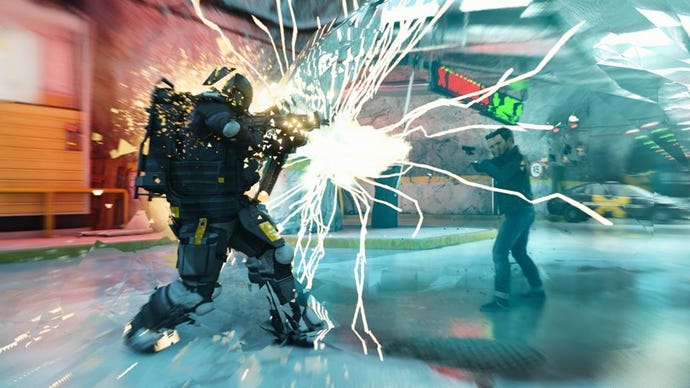




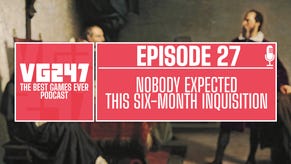


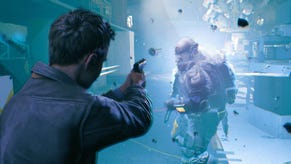



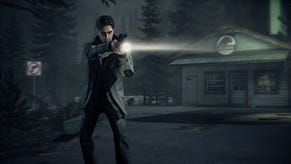
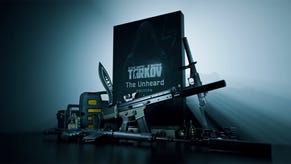


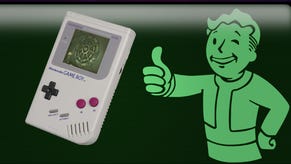



.png?width=291&height=164&fit=crop&quality=80&format=jpg&auto=webp)